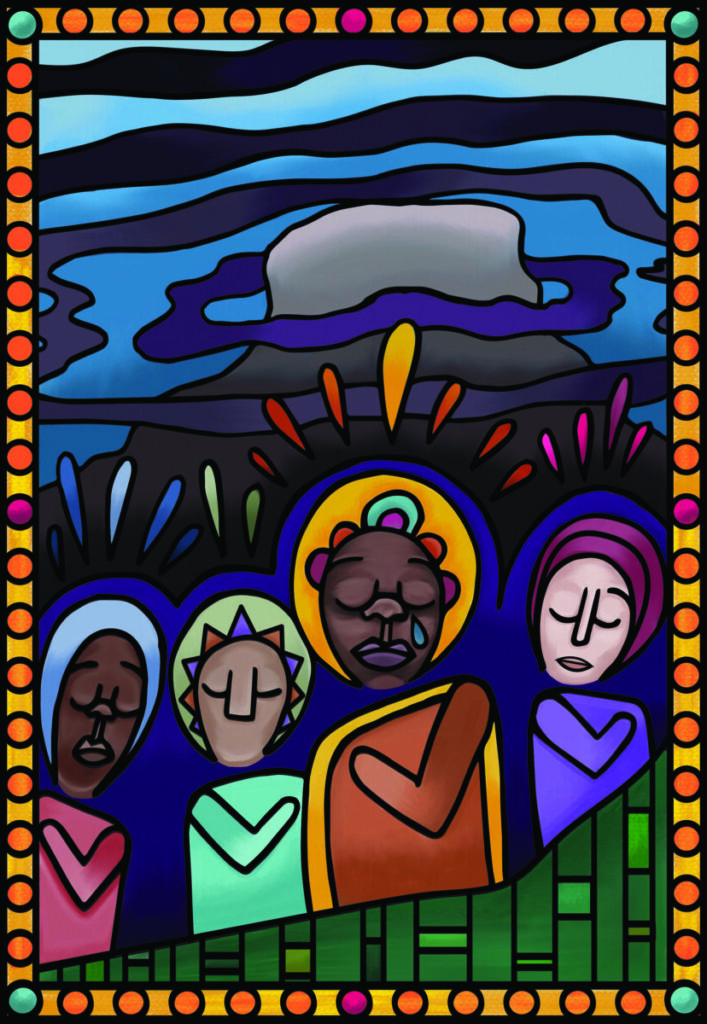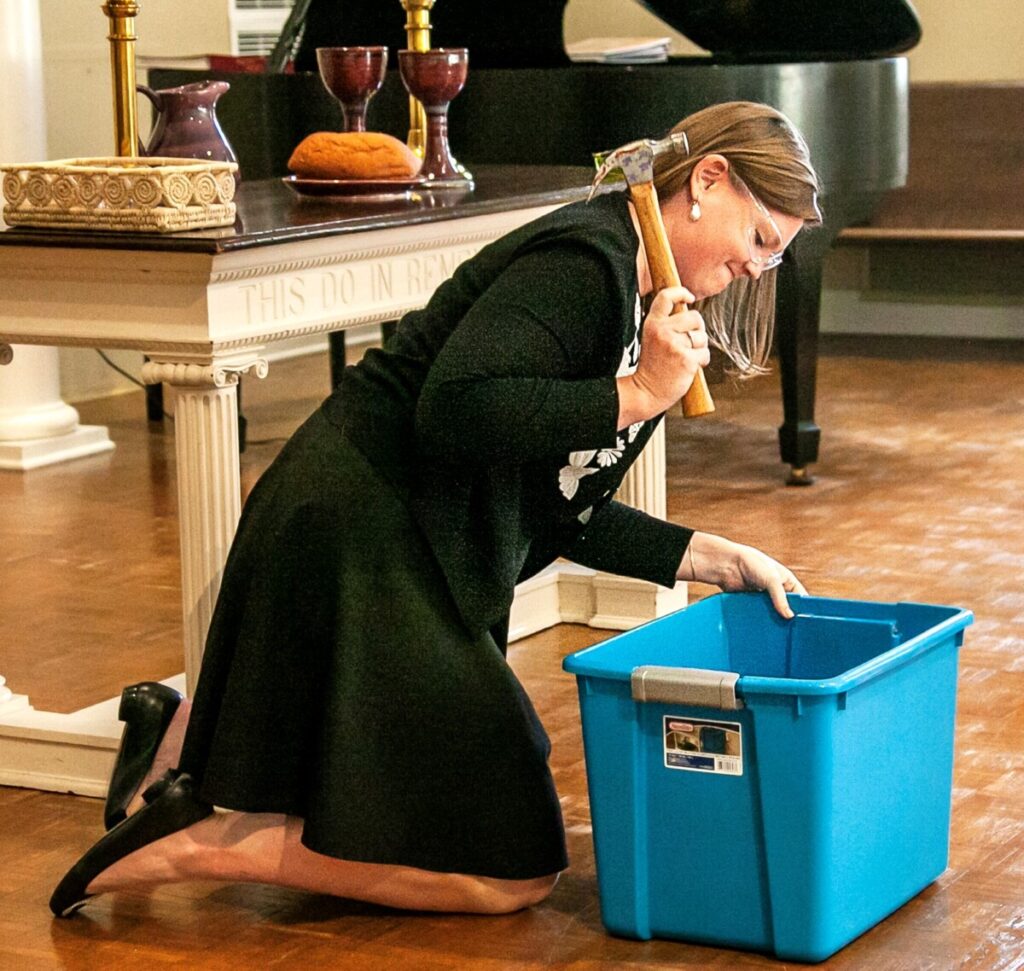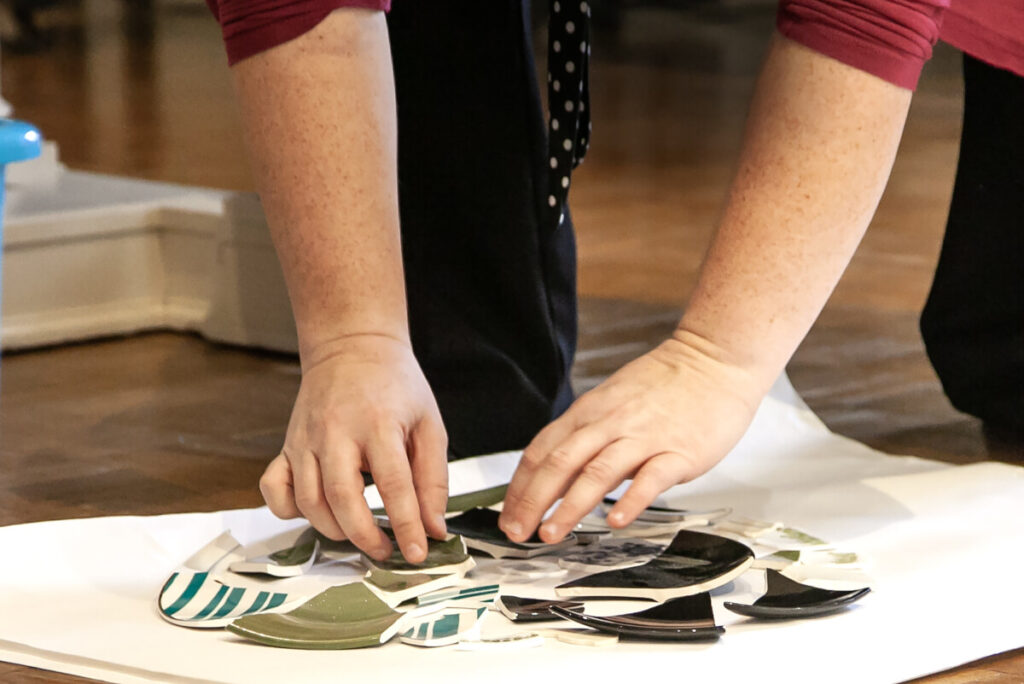Life, as we knew it, had come to a complete halt.
On March 15, 2020 the world came to a standstill as the COVID-19 virus caused life to stop in place. Suddenly this pandemic dictated every movement. We became isolated in our homes, fearful of this unknown illness, wary of contact with others, and we watched as millions of people lost their lives. Social distancing, quarantining, face masks, and vaccinations became the center of our existence for months as we struggled to learn how to live in a new reality where everyone was at risk.
With such an unprecedented disruption of life, the church struggled to minister to our people as the world turned upside down. Many people struggled to process the disorientation of the pandemic and the cultural traumas that plagued the United States including racial injustice, police brutality, polarizing politics, a heated presidential campaign, the rejection of science, mass shootings, and the insurrection in the U.S. Capitol on January 6, 2021. Churches struggled to give voice to the overwhelming sorrow, outrage, and collective trauma that was occurring. My own church, First Presbyterian Church in downtown Knoxville, a predominantly white, educated, and middle class congregation, grappled with coming to terms with the challenges the pandemic brought. We struggled with how this new reality clashed with the life we knew so intimately but wrestled with how to articulate it. How do we approach God when everything has fallen apart? How do we struggle together and articulate this fear?
There was no going back to life as we knew it. Life has changed and we need to lament what has been lost and move forward. The consequences of this pandemic will be far reaching and the Church must teach its people how to constructively lament before God and embrace the emotions that seem overbearing in order to seek healing.
We need to talk about our collective trauma.
We cannot pretend that we can go back to life before the COVID-19 pandemic. The patterns and routines of the life we knew seemed to completely fall apart and we were forced to adapt in ways that we never imagined, including in the Church.
We have experienced a collective trauma that has shifted the ways we view the world and view ourselves. With the loss of identity, people struggle to find new meaning to interpret trauma and relate to those around them and suddenly are inundated with disorientation. It can feel like we are drowning. We must acknowledge that we are now living in a new narrative and grieve the loss of the old and our previous identity.[1]
Our “mourning avoidant” culture needs to learn to lament.[2]
In a culture that values success, individualism, and composure, revealing our vulnerability is terrifying. We must acknowledge the pain of death, the millions of lives that were lost, and the death of our previous way of life. We will never return to “normal” life, but must evolve and form a new identity along with new patterns of life. Failing to acknowledge this trauma allows this suffering to spiral and grow even more destructive.
“Spaces for lament must exist, which is about expressing the nature of our woundedness, questioning why, and seeking answers and responses from God.”[3] However, those spaces, as needed as they are, are far and few between. My project sought to embrace the ancient practice of lament and encourage new and creative ways to enact it through embodied lament.
Embodied lament is an invitation to involve our entire being to face our brokenness and begin the journey to healing and new life.
Embodied lament suggests that we need to use our entire being, not just our words, but our bodies, minds, and hearts to express and encounter the trauma and pain we hold in our flesh and spirit. Often, words are not sufficient to express our despair and sorrow. Our bodies need to release the trauma we have endured if we are to create a new, cohesive identity. Lament is a practice our ancestors of faith knew intimately and turning to our scriptures can guide us to learn how to express the full range of human emotion before God.
The practice of lament is not an easy or simple form of worship to engage because of the pain and discomfort it evokes. Creating various avenues to express lament through movement, visuals, words, music, and other means allows for a variety of ways for the Holy Spirit to move when we feel overwhelmed with the baggage we bring from life. My project attempted to use creative rituals to engage lament in various ways through our early morning chapel service. Members were surveyed following the services to receive their feedback.
Service 1: Lament Seeking Healing
Using hand bells, the congregation was invited to participate in a responsive prayer to lift up the names of individuals that died of COVID-19 and the injustices, such as the deaths of black people by police brutality, that occurred during the pandemic. Each individual’s hand bell was part of a C Major chord and was needed to contribute to the overall musical effect. The music director added different bells to make minor or discordant chords to symbolize feelings of sorrow, anger, and the disorientation the pandemic caused. Here is a sample of the prayer:
We cry out for our nation where death and chaos seem never ending. Broken relationships and deep divisions, the shocking deaths of people of color, and the fear and anger that are so persistent are not of your story, Holy God. Your people long for a day when these things are of the past and death is no more. How long must we wait?
Hear our cries of pain and lament, O God.
[ring bells – 3 whole notes – play chaotic dissonant bells]
Service 2: Lament Seeking Justice
During this service, we highlighted the need to express our sorrow and despair at the ongoing violence and death of black people by police brutality. In lieu of a sermon, I invited a dear friend and fellow pastor, who is an African-American man, to have a conversation about his experience of the pandemic and the racial injustices towards black people in our country. His perspective and lament lifted up the trauma that people of color have experienced, a story that white people, like my congregation, need to embrace as part of their own and lament together.
As a sign of lament and repentance, we used the ancient ritual of anointing to symbolize our commitment to seek justice and lament corporately.
Service 3: Lament Seeking Transformation
Using Walter Brueggemann’s framework from Spirituality of the Psalms, in three movements we embodied the three categories of Psalms to highlight the change the pandemic brought.
- Orientation: Psalms that help us express trust in an unwavering and reliable God. “Life is not troubled or threatened, but is seen as the well-ordered world intended by God.”[4]
The ritual for this service began with presenting a range of dinner plates to worshipers. Each person was invited to pick out a dish as a symbol of the beauty and wholeness that God intended creation to be. We read and reflected on Psalm 8.
Disorientation: Psalms that name that life is often “marked by incoherence, a loss of balance, and unrelieved asymmetry.”[5] The unexpected shatters the reality you knew and it seems impossible to put the pieces back together. We cry out to God, “How long will this last?” and ask God to lead us out of the darkness.
After reading Psalm 137, worshipers were invited to come forward and break the dishes with hammers, the shattering serving as our lament brought by the turmoil and chaos of the pandemic.
New Orientation: We see God’s intervening power spoken of powerfully in a world where death and chaos seem to be the defining power. But they aren’t. Resurrection life is possible and these Psalms speak to God’s transforming power to bring new life.
Finally, each worshiper was invited to select a shard of a broken plate and together make a new symbol, signifying the new life we seek and our faith that God will transform this time of darkness into something lifegiving. We read Psalm 96 and reflected on the resurrection life that God intends for all God’s people.
Final Reflection
Embodied lament opened up a new way of approaching God for many of those worshippers. The jarring sound of the broken plates was particularly memorable and participants overwhelmingly agreed that these rituals gave them new ways to worship and lament. Their eagerness to try new methods of worship to lament was embraced strongly. In the future, I intend to incorporate lament into worship on a regular basis to help our members become familiar with these practices and create a resilient faith that enables them to persist when darkness descends. I also intend to create a regular healing and wholeness service that meets throughout the year.
Some takeaways:
- Attempt creative and out-of-the-box rituals – people interact with the world in various ways
- Model vulnerability as a way to invite others to share their own woundedness
- Incorporate scripture that lifts up sorrow and lament, not just what cycles through the revised common lectionary
- Sit with the tension and silence that lament evokes and do not rush to fill the silence
- Embrace risk and failure as part of lament
[1] Jeffrey Alexander, quoted in “Toward a Theory of Cultural Trauma,” in Cultural Trauma and Collective Identity, ed. Jeffrey C. Alexander et al. (Berkeley and Los Angeles: University of California Press, 2004), 1.
[2] Anne E. Streaty Wimberly. From Lament to Advocacy: Black Religious Education and Public Ministry, (Nashville, TN: Wesley’s Foundery Books), 2020, 4.
[3]Wimberly. From Lament to Advocacy, 2020, 3.
[4] Walter Brueggemann. Spirituality of the Psalms, (Minneapolis, Fortress Press, 2002), 27.
[5] Brueggemann. Spirituality of the Psalms, 43.



